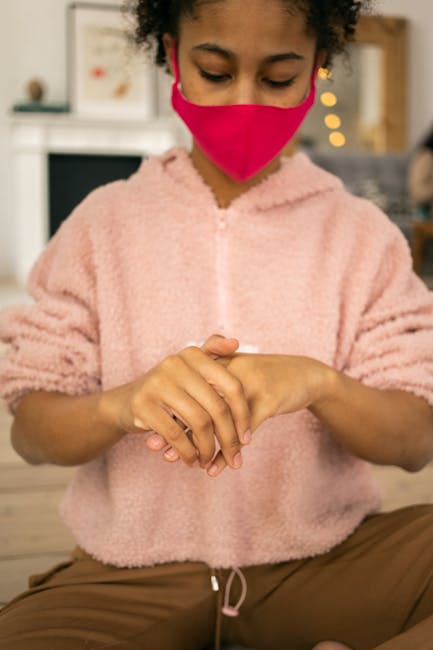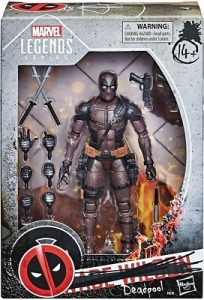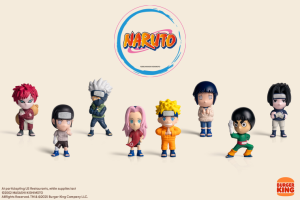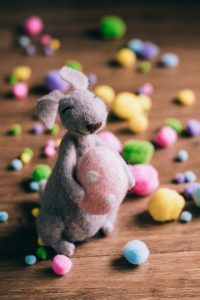Cleaning toys might not be the most exciting task on your to-do list, but it’s crucial for keeping your children safe and healthy. You probably know that toys can harbor germs, allergens, and dirt, but the good news is that keeping them clean doesn’t have to be a hassle.
Imagine the peace of mind you’ll have knowing your little ones can play freely without the lurking threat of harmful bacteria. You’ll discover simple yet effective methods to clean various types of toys, ensuring they remain as fresh and safe as the day you bought them.
Let’s dive into practical tips that will make toy cleaning a breeze and give you one less thing to worry about. Ready to transform your cleaning routine? Let’s get started!

Credit: www.instagram.com
Importance Of Cleaning Toys
How to Clean Toys Clean toys keep kids safe from germs and bacteria. Regular washing prevents the spread of illnesses. Use mild soap and warm water for non-electronic toys. For electronic toys, wipe with a damp cloth. Ensure toys are fully dry before use.
This simple routine protects children’s health effectively.
Cleaning toys is crucial for maintaining a healthy environment for children. Toys can harbor bacteria, dust, and allergens over time. Regular cleaning helps prevent the spread of germs. It also keeps toys in good condition, extending their life. Parents and caregivers play a vital role in ensuring toys remain safe for kids.Why Clean Toys Regularly?
Children often put toys in their mouths. This increases the risk of spreading germs. Regular cleaning minimizes this risk. Clean toys also reduce the chance of allergic reactions. Dust and dirt can accumulate quickly on toys. Keeping them clean protects children’s health.Preventing Germ Spread
Toys can be a breeding ground for bacteria. This is especially true for shared toys in schools or daycare centers. Cleaning them stops germs from spreading among kids. It’s important to clean toys after a child is sick. This prevents the illness from spreading to others.Maintaining Toy Quality
Dirt and grime can damage toys over time. Regular cleaning helps maintain their appearance and function. Clean toys look better and last longer. This saves money as you won’t need to replace them often. Proper care ensures toys remain safe and functional.Allergy And Asthma Prevention
Dust and allergens can trigger asthma and allergies in children. Regular cleaning reduces these allergens. This keeps the environment safer for children with sensitivities. A clean toy is a healthier toy for kids to play with.Tips For Effective Toy Cleaning
Use mild soap and water for most toys. Avoid harsh chemicals that can damage toys. Rinse thoroughly to remove any soap residue. Dry toys completely to prevent mold growth. For fabric toys, check if they are machine washable.Types Of Toys
Cleaning toys is essential for keeping children safe. Plastic toys can be washed with warm soapy water. Soft toys may need a gentle cycle in the washing machine. Always check labels for specific cleaning instructions.
Cleaning toys is essential for maintaining a healthy environment for children. Different types of toys require specific cleaning techniques. Understanding the materials helps in choosing the right cleaning methods.Plastic And Rubber
Plastic and rubber toys are easy to clean. Use warm soapy water for washing. Rinse thoroughly to remove all soap residue. For tough stains, a mix of vinegar and water works well. Ensure toys dry completely before use.Wooden
Wooden toys need gentle cleaning. Wipe them with a damp cloth. Avoid soaking them in water. Use mild soap if necessary. Dry them immediately to prevent warping. Check for cracks or splinters regularly.Stuffed Animals
Stuffed animals can harbor dust and allergens. Machine wash on a gentle cycle. Use a laundry bag for protection. Air dry them to maintain their shape. For delicate ones, spot clean with a damp cloth.Electronic
Electronic toys require careful cleaning. Unplug or remove batteries first. Use a dry cloth to wipe surfaces. For buttons and screens, a damp cloth is safe. Avoid excessive moisture to protect circuits. Check for damage before reassembling.Safe Cleaning Products
Clean toys with safe cleaning products to keep children healthy. Use mild soap and water for plastic toys. For stuffed toys, check if they are machine washable, or use baking soda to freshen them up. Ensure toys dry completely to prevent mold growth.
Cleaning toys ensures safety and extends their life. Choosing safe cleaning products is vital for your child’s health. Many options exist, from natural solutions to commercial cleaners. Explore what works best for your family and toys.Natural Cleaners
Natural cleaners are gentle and eco-friendly. Vinegar is a popular choice. Mix equal parts water and vinegar in a spray bottle. It’s effective for plastic and wooden toys. Baking soda is another option. It can scrub away grime without chemicals. Essential oils like tea tree oil add a pleasant scent. These oils have antibacterial properties. Always test oils on a small area first.Commercial Cleaners
Commercial cleaners are convenient and widely available. Choose products labeled non-toxic or hypoallergenic. They should be free from harsh chemicals. Many brands offer toy-specific cleaning sprays. These are safe for children and pets. Read labels carefully to ensure safety. Some wipes are also available for quick clean-ups. Check for alcohol-free options, as alcohol can dry out surfaces.Diy Solutions
DIY solutions are cost-effective and customizable. Create a simple soap and water mixture. Use mild dish soap and warm water. Scrub toys with a cloth or sponge. This works well for most materials. For fabric toys, consider a homemade solution. Mix water, lemon juice, and baking soda. Spray lightly and let air dry. These DIY methods are safe and budget-friendly. Choosing the right cleaning product is key. It keeps toys safe and clean for your children.Step-by-step Cleaning Methods
Keeping toys clean ensures a safe play environment for children. Different toys require different cleaning methods. Understanding the correct technique preserves the toy’s lifespan.
Handwashing Techniques
Handwashing is ideal for delicate toys. Use mild soap and warm water. Avoid soaking fabric toys for too long. Rinse thoroughly to remove soap residue. Allow them to air dry completely.
Machine Washing
Check the toy’s label for washing instructions. Place toys in a mesh laundry bag. Use a gentle cycle with cold water. Add mild detergent to avoid damage. Dry on low heat or air dry.
Disinfecting Electronic Toys
Electronic toys need careful cleaning. Turn off and unplug before cleaning. Use a damp cloth with mild soap. Avoid getting water in battery compartments. Wipe thoroughly and dry completely.
Drying And Storing Toys
Drying toys thoroughly prevents mold and extends their life. Store them in a dry, cool place to maintain cleanliness.
Drying and storing toys effectively ensures they remain clean, safe, and ready for play. Once you’ve washed those sticky fingers off your child’s beloved teddy bear or sanitized the plastic building blocks, the next steps are crucial. Proper drying prevents mold and mildew, while smart storage solutions keep toys organized and extend their lifespan. So, how can you make sure you’re doing it right?Air Drying Tips
Air drying is an efficient method for most toys. Lay plush toys flat on a clean towel in a well-ventilated area. Turn them occasionally to ensure even drying. For plastic toys, consider placing them on a drying rack or hanging them in mesh bags to allow air circulation. Avoid direct sunlight to prevent fading and heat damage. Do you find toys take too long to dry? Try using a fan to speed up the process without causing damage.Proper Storage Solutions
Storing toys correctly can be as simple as having designated bins or shelves. Clear containers are great for quickly spotting what’s inside. Label baskets to make cleanup easier for your little ones. For smaller toys or puzzle pieces, utilize zippered pouches or drawer organizers. Are you dealing with limited space? Wall-mounted nets or hanging organizers can maximize vertical storage. Keep toys off the floor to avoid dust accumulation and tripping hazards.Frequency Of Cleaning
Clean toys weekly to keep them safe and hygienic. Use mild soap and warm water for plastic toys. For stuffed animals, washing them in a gentle cycle keeps them fresh.
Cleaning toys is essential for keeping them safe and hygienic. The frequency of cleaning depends on how often children play with them. Regular cleaning helps maintain toy quality and ensures a healthy environment. Let’s explore daily maintenance and deep cleaning schedules.Daily Maintenance
Daily maintenance keeps toys free from dust and germs. Wipe toys used frequently with a damp cloth. Use mild soap and water for sticky residue. Soft toys can be shaken to remove loose particles. For bath toys, let them dry thoroughly after each use. Sanitize plastic toys with a homemade vinegar solution.Deep Cleaning Schedule
Deep cleaning is crucial for maintaining toy hygiene. Schedule a thorough cleaning at least once a month. For plastic toys, soak them in warm soapy water. Use a toothbrush for hard-to-reach areas. Stuffed animals can be washed in a washing machine. Use a gentle cycle and mild detergent. Wooden toys require special care; clean them with a damp cloth. Avoid soaking them to prevent damage.Safety Precautions
Ensure toys are clean to keep children safe. Use mild soap and water for washing. Rinse thoroughly and let them dry completely.
Cleaning toys is important for your child’s health and safety. Before you start, consider some safety precautions. These ensure a safe cleaning process without compromising toy integrity or child safety. Below are essential precautions for cleaning toys effectively and safely.Avoiding Harsh Chemicals
Many cleaning agents contain strong chemicals. These can harm the toy’s material and your child. Use mild soap or natural cleaners. Vinegar and baking soda are effective and safe. They clean without leaving harmful residues. Always read labels on cleaning products. Ensure they are non-toxic and safe for children.Ensuring Child Safety
During cleaning, keep toys out of children’s reach. This prevents accidental ingestion of cleaning agents. Use gloves to protect your hands from irritation. Rinse toys thoroughly after cleaning. This removes any leftover soap or cleaner. Dry toys completely before giving them back to your child. Wet toys can harbor bacteria or mold. Always ensure toys are safe and clean for playtime.
Credit: www.youtube.com
Eco-friendly Cleaning
Clean toys using eco-friendly methods to protect kids and the planet. Use vinegar and water for effective cleansing. Dry toys naturally to maintain safety and hygiene.
Cleaning toys in an eco-friendly way is not just about keeping your child’s playthings spotless; it’s also about caring for the planet. With increasing awareness around environmental issues, many parents are opting for sustainable practices that help reduce waste and minimize chemical exposure. By choosing eco-friendly methods, you can ensure your kids’ toys are safe while contributing positively to the environment. Let’s dive into how you can adopt sustainable practices and reduce your environmental impact through eco-friendly cleaning.Sustainable Practices
When cleaning toys sustainably, consider using natural cleaning agents. Lemon juice and baking soda are excellent alternatives to chemical-laden products. They are effective and safe for both children and the environment. You can also make homemade cleaning solutions using simple ingredients like vinegar and water. This not only reduces packaging waste but also helps you avoid synthetic chemicals. Another sustainable practice is using reusable cloths or sponges instead of disposable wipes. This small change can significantly reduce household waste while saving money in the long run.Reducing Environmental Impact
Are your cleaning habits contributing to the planet’s well-being? By choosing eco-friendly products, you can significantly reduce your environmental footprint. Opt for biodegradable soaps and detergents that break down naturally without harming ecosystems. Consider air-drying toys rather than using energy-intensive appliances. Sunlight is a natural disinfectant, and air-drying conserves electricity. Think about how much water you use during cleaning. Simple measures like using a bowl of water instead of running the tap can save gallons of water over time. Are there small changes you can make to ensure a healthier planet for future generations? Adopting eco-friendly cleaning habits might be the perfect start!Expert Insights
Discover effective ways to clean toys safely and efficiently. Regular cleaning keeps germs away and ensures a healthy playtime environment. Choose the right cleaning method based on the toy’s material for best results.
Cleaning toys isn’t just about removing dirt. It’s about ensuring the safety of children. Experts share crucial insights to help you clean toys effectively. Understanding common mistakes and following professional recommendations can make a big difference.Common Mistakes
Many people overlook reading the manufacturer’s instructions. Each toy has specific cleaning needs. Using harsh chemicals is another common mistake. They can damage toys and harm children. Over-soaking electronic toys leads to damage. It can render them useless. Parents often forget to rinse toys thoroughly. Soap residue can irritate children’s skin. Ignoring toy storage after cleaning is also a mistake. Proper storage prevents dust and dirt accumulation.Professional Recommendations
Experts suggest reading labels before cleaning. Follow the manufacturer’s instructions closely. Use mild detergents for cleaning most toys. They are safe and effective. For plastic toys, consider using a dishwasher. It ensures thorough cleaning. Use a damp cloth for electronic toys. Avoid soaking them to prevent damage. Always rinse toys well after washing. This removes any soap residue. Air-drying is recommended for most toys. It prevents mold and mildew growth. Proper storage is crucial after cleaning. Store toys in dry, clean places. This keeps them fresh and ready for use.
Credit: www.tiktok.com
Frequently Asked Questions
What Is The Best Way To Clean Toys?
The best way to clean toys depends on their material. For plastic toys, use warm water and mild soap. For fabric toys, consider machine washing if appropriate. Always check the manufacturer’s instructions to ensure safe cleaning methods, and avoid harsh chemicals that may harm delicate surfaces or materials.
Can You Sanitize Toys At Home Effectively?
Yes, you can sanitize toys at home effectively using household items. Use a mixture of water and white vinegar as a natural disinfectant. For extra safety, consider using a diluted bleach solution for non-porous toys. Always rinse thoroughly and allow toys to air dry before use.
How Often Should You Clean Children’s Toys?
Children’s toys should be cleaned regularly to prevent germs. Aim to clean frequently used toys weekly. For toys that come into contact with saliva or food, clean them daily or after each use. During illness outbreaks, increase cleaning frequency to ensure safety and hygiene.
Are Disinfecting Wipes Safe For Toy Cleaning?
Disinfecting wipes can be safe for toy cleaning if used correctly. Choose wipes labeled safe for toys and surfaces children frequently touch. Avoid using wipes on porous toys or those children put in their mouths. Always follow instructions and ensure toys are completely dry before play.
Conclusion
Toys bring joy to children, but dirt and germs can spoil fun. Regular cleaning keeps toys safe and fresh. Use gentle soap and warm water. For electronic toys, a damp cloth works best. Always dry toys thoroughly to prevent mold.
Clean stuffed animals in the washing machine. Check labels for instructions. Disinfect hard toys with wipes or sprays. Take extra care with bath toys. Squeeze out water after use. Cleaning toys helps maintain their durability. Protects children’s health too. Keep playtime enjoyable and safe.
Happy cleaning!




